The Texas city has an immense pride in its cowboy heritage

Reviews and recommendations are unbiased and products are independently selected. Postmedia may earn an affiliate commission from purchases made through links on this page.
Article content
If you are a Canadian visiting Fort Worth, Texas, and you think you hear “aboot,” the people there are not mocking your Canuck pronunciation.
Advertisement 2
Article content
Rather, they are referring to “a boot” — the singular form of “boots,” the Western footwear worn by cowboys, businessmen, and everyone in between in this north Texas community often overshadowed by its neighbour Dallas.
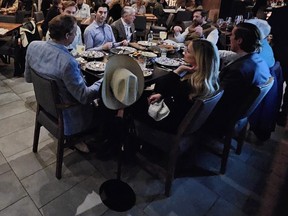
During a recent visit to Fort Worth, whether my wife Ruth and I were downtown, or in the Stockyards, or in the Cultural District, we discovered that there is an immense pride in Fort Worth’s cowboy heritage. On formal occasions, a man will wear his best cowboy boots, not dress shoes, with a suit. Restaurants will provide a hat rack at each table to hold each diner’s cowboy hat.
As much as an expanding Fort Worth — now with the 12th-largest population among United States cities, just short of a million citizens — builds for the future, its heritage of cattle drives, livestock shows, and rodeos remains a huge part of its appeal to visitors and residents.
Advertisement 3
Article content

THE BOOTS AND APPAREL
In Fort Worth, mentions of Justin are in reference to a 145-year-old Western footwear company, not to the current Canadian prime minister.
H.J. Justin began his bootmaking business in 1879, selling to cattlemen driving their herds along the Chisholm Trail. His sons, who took over the business, moved the company’s headquarters to Fort Worth in the 1920s.
A stop at Justin’s large factory outlet store just south of downtown was an eye-opener. Rows upon rows of men’s cowboy boots. Rows upon rows of women’s cowboy boots. Each boot makes a fashion statement. And you wouldn’t want to get a pair of boots without also picking up one of the cowboy hats for sale there.
At the Stockyards, shops such as Fincher’s White Front, Maverick, and M.L. Leddy’s cater to those wanting Western wear — or those who just want to stare at the creativity shown on the boots. More Western wear shops, such as Ariat and Lucchese, are located in Mule Alley, a laneway at the Stockyards which also hosts restaurants and bars.
Article content
Advertisement 4
Article content

THE COWBOY CULTURE
The Fort Worth Herd is one of the best-known (and free!) spectacles for visitors to Fort Worth.
Twice a day at the Stockyards, 17 longhorn steers are paraded along East Exchange Avenue in a commemoration of Chisholm Trail cattle drives. It takes about only three minutes for the steers to pass by any spot on the parade route, but any visit to the Stockyards area should be planned with the timing of the parades (11:30 a.m. and 4 p.m.) in mind.
Before the parade, a cowboy explains to the crowd that Fort Worth was about halfway on the trail, and provided bountiful resources for the cattle (grass and water) and the cowboys (hotels, casinos, etc.).
For a more thorough understanding of the connection between cattle and Fort Worth, visit the Fort Worth Museum of Science and History in the Cultural District. A large part of the museum’s second floor is devoted to the Cattle Raisers Museum, where we learned that the longhorn cattle are a result of native cattle and Spanish cattle being bred together, and that hundreds of products (besides meat and milk) come from cattle.
Advertisement 5
Article content
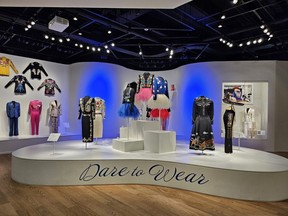
The building next to the museum houses the National Cowgirl Museum and Hall of Fame, which includes artwork and displays which document the role of women in the West. Hall of Fame inductees include sharpshooter Annie Oakley, artist Georgia O’Keeffe, “America’s Only Girl Auctioneer” Norma Sanders, teacher Jacqueline Smith McEntire, and her daughter, singer Reba McEntire.
Cowboy culture of another kind can be found in the Stockyards at Billy Bob’s Texas, which bills itself as “The World’s Largest Honky Tonk.” It certainly is large, and during our visit was filled with young fans eager to hear Wyoming singer Ian Munsick. He joined a who’s who of country stars who have performed there, such as Garth Brooks, Alan Jackson, Waylon Jennings, Willie Nelson, George Strait, and many, many more.
Advertisement 6
Article content

THE RODEOS
Our visit coincided with the Fort Worth Stock Show and Rodeo, a three-week event in January and February in the Cultural District.
The rodeo part of the event takes place inside Dickies Arena, a modern multipurpose facility in the Cultural District. (Dickies Arena also is home to Panther City of the National Lacrosse League, and many national and international sporting events.)
The most spectacular part of the night’s activity is at the beginning. The Grand Entry is a display of U.S. and Texas patriotism, with horses and riders filling the arena floor.
Canadians who watch the Calgary Stampede live or on television will be familiar with the rodeo events — and a few Canadians were among the competitors during our evening. There also are lighter moments between the competitions, such as a calf scramble (4-H and FFA students try to bring a calf into a square on the arena’s dirt floor), mutton bustin’ (children try to stay on a sheep for eight seconds), and laughs from entertainer (the term “rodeo clown” is out of date) Matt Merritt.
Advertisement 7
Article content
Away from the rodeo, the “stock” on display and in various judged competitions at the FWSS&R includes horses, donkeys, mules, cattle, pigs, sheep, goats and rabbits. There are also concerts and an outdoor carnival (similar to the CNE midway).
At the Stockyards, there are rodeo events every weekend throughout the year under the banner of Stockyards Championship Rodeo. They take place in the intimate Cowtown Coliseum, which opened in 1908 and is a Texas Historic Landmark.
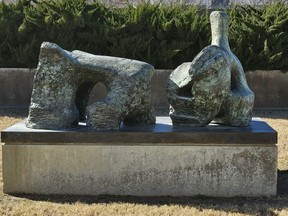
THE OTHER CULTURE
Fort Worth isn’t all about cowboys and cattle, however.
That Fort Worth Museum of Science and History, for instance, has a planetarium. It also devotes much of its space to child-friendly exhibits, such as a dinosaur skeleton. “We are not a children’s museum, but we have a lot of hands-on activities,” Bob, a retired educator and volunteer at the museum, told us.
Advertisement 8
Article content
Other museums in the Cultural District, all within walking distance of each other, include the Kimbell Art Museum and the Modern Art Museum.
The Kimbell Art Museum values having a small permanent collection of quality art, including pieces by Picasso and Monet, plus a sculpture by Henry Moore, a name quite familiar to Torontonians.
The Modern Art Museum displays recent creations which push the boundaries of what you might think of as art, such as “Ladder for Booker T. Washington” by Martin Puryear, a thought-provoking wooden ladder on which its imaginary climber doesn’t quite reach his goal of racial equality.
A museum in the planning stages in the city’s Historic Southside neighbourhood is the National Juneteenth Museum, meant to educate and commemorate the official end of enslavement in the United States on June 19, 1865, when Union soldiers arrived in Galveston, Texas, and announced the Emancipation Proclamation.
Advertisement 9
Article content
Why would the museum be in Fort Worth and not tiny Galveston? “We think Juneteenth requires visibility,” said Jarred Howard, the museum’s CEO. “Most Americans still don’t know what Juneteenth is.” As well, Fort Worth is home to Ms. Opal Lee, who was one of the instrumental figures in Juneteenth becoming a U.S. holiday.

Downtown, the Bass Performance Hall is home to the Fort Worth Symphony Orchestra and also hosts ballet, opera, and touring Broadway productions. During our visit to the beautiful facility, we heard the FWSO accompany singer and pianist Michael Cavanaugh for an evening of Billy Joel and Elton John hits.
TIP: Arrive early, head to Level 4, and go to the balcony to see and photograph the angels on the building’s exterior.
Advertisement 10
Article content
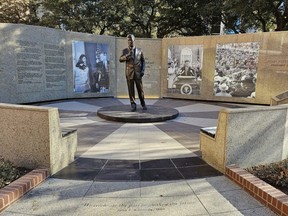
A more sombre cultural touchstone is the John F. Kennedy tribute, a downtown display which commemorates the former U.S. president’s final public speeches on the morning of Nov. 22, 1963 in Fort Worth before his assassination later that day in Dallas.

FOOD AND DRINK
The term “hidden gem” is used a lot as people try to promote things, but it’s literally true with Joe T. Garcia’s. It’s a 10-minute walk from the Stockyards, and looking at the exterior of the building, you wouldn’t guess that you were approaching a great restaurant until you see the lineup of people waiting to get in.
When you eventually do get inside, everything changes.
The complex is large — capacity is 1,600 — and is filled with trees, flowers, other plants, and fountains. The restaurant itself is family-owned and family-run. Kelly Lancarte, the restaurant’s director of marketing and public relations, is part of the fourth generation to work at Joe T. Garcia’s since it opened in 1935.
Advertisement 11
Article content
The Tex-Mex food is authentic, tasty, reasonably priced — and there was lots of it left over for a meal for Ruth and I the next day.

In the Cultural District, an upscale northeastern Mexican restaurant which stands out is Don Artemio, a James Beard Award nominee for Best New Restaurant 2023.
We learned about the authenticity of the atmosphere inside the restaurant — the clay bricks forming the walls are from Saltillo, Mexico, and the tables, the plates, and even the leather on the menu card are also from Mexico. The staff are trained to be able to give a history lesson in addition to information about the food and beverages. All the food was wonderful, but a special treat was the Nopalitos Fritos appetizer, which is fried cactus with a touch of bacon.
Advertisement 12
Article content
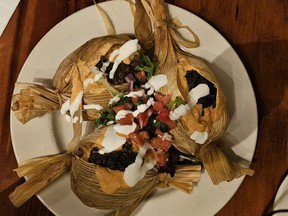
Downtown, a search for Reata will be worth your time, and your stomach will thank you. The restaurant’s location has changed over the years — once because of a tornado in 2000 — and will be in a temporary location at 530 Throckmorton as of July 12, 2024 before another move. Everything stood out, especially the tenderloin tamales with pecan mash.

Also downtown, 61 Osteria is a fine dining Italian restaurant which opened in 2023. We enjoyed sampling some of their pastas, such as the Tagliatelle Bolognese (the sauce is based on braised brisket, veal, and pork, and here’s the recipe), and the Wild Boar Pappardelle. The room has a high ceiling and plenty of space between booths, so you feel as if you are having a private dinner. The wine list is sorted by Italian geographic regions.
Advertisement 13
Article content
In the Stockyards, Riscky’s Steakhouse is part of a family operation which began in the 1920s.
GETTING THERE
There are direct flights between Pearson airport and Dallas Fort Worth International Airport (DFW). Once there, while you can rent a car or engage a rideshare service to reach Fort Worth, consider taking the TEXRail train, which boards near Terminal B and arrives in downtown Fort Worth about an hour later. Tickets are only US$2.50.

STAYING THERE
A hotel option in downtown Fort Worth is The Kimpton Harper Hotel, a repurposed 24-storey landmark. That 24th floor serves as the check-in area, as well as the Refinery 714 penthouse lounge and bar. It is within walking distance of many of the downtown attractions, such as the massive Chisholm Trail mural at Sundance Square.
FOR MORE INFORMATION
Visit Fort Worth’s website is filled with information and ideas on things to do and see in the city.
Recommended from Editorial
Article content





